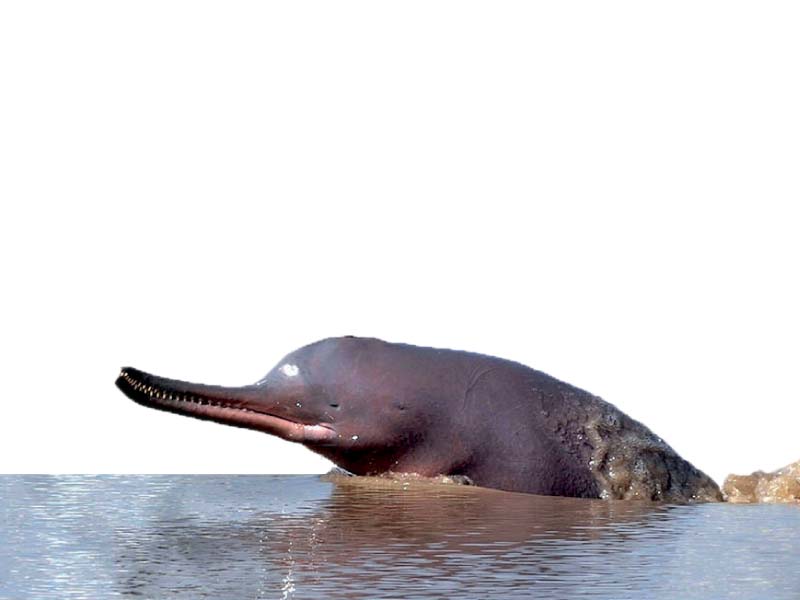
LAHORE: The Indus River dolphin, the second most endangered freshwater river mammal, has received a fresh lifeline with the government planning to invest in the process of satellite tagging, which in the long run will enable them to prevent the threat of extinction.
One of the world’s rarest dolphins, only found in Pakistan, has been in trouble for some time, and its population has dipped to alarmingly low numbers. With the help of the World Wildlife Fund (WWF), a leading organization in conservation, the wildlife department, now plans to conduct a survey to determine the current status of the endangered species. During this process, experts said, the dolphins will be tagged. “This will allow them to track river Indus dolphins using satellite technology.” “The tool will provide new insight into the animals’ movements, behaviour, and threats they face,” he added.
Once a tag is attached to the animal, it uses satellite to relay information about its location and movement back to researchers. In the long-run, the information gathered from the tags will help create stronger conservation plans for the protection of river dolphins and their habitats.
According to a survey conducted by the WWF in 2011, the total population of dolphins was 1,200. In a recent survey conducted by the organisation, the number seems to be improving. The population now stands at 1,800.
Indus Dolphin rescued from canal
“The numbers have improved over the past 15 years due to the combined efforts of the government, NGOs, and representatives of local communities,” said Hammad Naqi, Director General of WWF-Pakistan.
According to the WWF, Indus River dolphins originated in the ancient Tethys Sea. When the sea dried up approximately 50 million years ago, the dolphins migrated to adapt to its only remaining habitat—rivers. Today, they populate the lower parts of the Indus River in Pakistan.
In Pakistan, their numbers declined dramatically after the construction of an irrigation system, and most dolphins are confined to a 750 mile stretch of the river and divided into isolated populations by six barrages. They have adapted to life in the muddy river and are functionally blind.
Now with the help of WWF, the Punjab Wildlife department is all set to conduct the survey between Jinnah and Chashma barrages, where the dolphins are available in large numbers.
Commenting on the plans, Wildlife department’s honorary game warden Badar Munir told The Express Tribune that the department is actively working to restore the natural habitats of endangered wild and marine species across the province.”The conservation of wildlife animals is in line with the prime minister’s vision and his Green Pakistan Program,” claimed Munir. He said that the wildlife department was all set to expand the presence of the rare species in the lower course of the river.
According to Munir, the survey will ascertain the actual count of Indus dolphins in Punjab and allow researchers to investigate the reasons behind the migration of the rare species. “Once completed, the research will allow the department to develop a natural habitat for the dolphins between Jinnah and Guddu barrages,” he added.
Published in The Express Tribune, March 13th, 2020.






































COMMENTS
Comments are moderated and generally will be posted if they are on-topic and not abusive.
For more information, please see our Comments FAQ